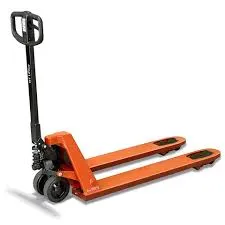


Industrial Fall Protection Devices Enhancing Safety in the Workplace
In the industrial sector, safety is a paramount concern, particularly when it comes to the prevention of falls from heights. Accidental falls are among the leading causes of workplace injuries and fatalities. To combat this issue, industrial fall protection devices have become essential in creating a safer work environment. These devices are designed to prevent accidents and protect workers who operate at elevated heights, ensuring that safety regulations are met and lives are safeguarded.
Understanding Fall Hazards
Fall hazards are common in many industrial settings, including construction sites, warehouses, and manufacturing plants. Factors contributing to these hazards include unguarded edges, improper ladder use, and slippery surfaces. To mitigate these risks, industries must adopt comprehensive fall protection strategies, which often start with identifying potential hazards within the workplace.
Types of Fall Protection Devices
There are various types of fall protection devices, each serving a unique purpose in maintaining safety. Some common devices include
1. Guardrails These are physical barriers installed on platforms, scaffolds, and roofs to prevent workers from falling over the edge. Guardrails should be designed to meet specific height and strength requirements to provide effective protection.
2. Personal Fall Arrest Systems (PFAS) This system includes harnesses, lanyards, and anchor points that work together to arrest a fall. When a worker falls, the harness distributes the force of the fall across the body, while the lanyard connects to a secure anchor point to halt the fall. PFAS is particularly essential for workers at significant heights.
3. Safety Nets These nets are placed below areas where work is being conducted at heights. They catch falling workers or tools, preventing injuries and damage. Safety nets are crucial in construction where overhead work is common.

4. Ladders and Scaffolding While these are not technically fall protection devices, the use of properly designed and maintained ladders and scaffolding reduces the risk of falls. They should comply with safety standards, including proper storage and setup procedures.
5. Anchor Points These are secure points where workers can attach their fall protection equipment. Anchor points must be capable of withstanding the forces of a fall and should be installed by qualified personnel to ensure safety.
Employee Training and Safety Culture
Implementing fall protection devices is only part of a comprehensive safety plan. Employers must also prioritize training their workforce on the proper use of these devices and the importance of fall protection. Employees should be trained to recognize hazards, use equipment correctly, and understand the procedures for their specific roles.
Creating a safety culture within the workplace is equally important. This involves fostering an environment where safety is a shared responsibility. Open communication about safety concerns and regular safety audits can help identify and mitigate risks before accidents occur.
Regulatory Compliance
Industrial sectors are subject to various regulations concerning workplace safety. In many countries, organizations must comply with standards set by regulatory bodies, such as the Occupational Safety and Health Administration (OSHA) in the United States. These regulations outline specific requirements for fall protection methods, ensuring that both employers and employees adhere to safety practices.
Conclusion
As industries continue to evolve, the emphasis on workplace safety, particularly regarding fall protection, remains critical. The implementation of effective fall protection devices not only protects workers but also enhances productivity by reducing the incidence of accidents and associated costs. By combining the use of fall protection devices with employee training and a strong safety culture, organizations can create a safer work environment. Ultimately, prioritizing safety is not just a regulatory obligation but a moral imperative that ensures the well-being of all employees. In this ever-evolving industrial landscape, investing in fall protection will yield significant benefits for everyone involved.



